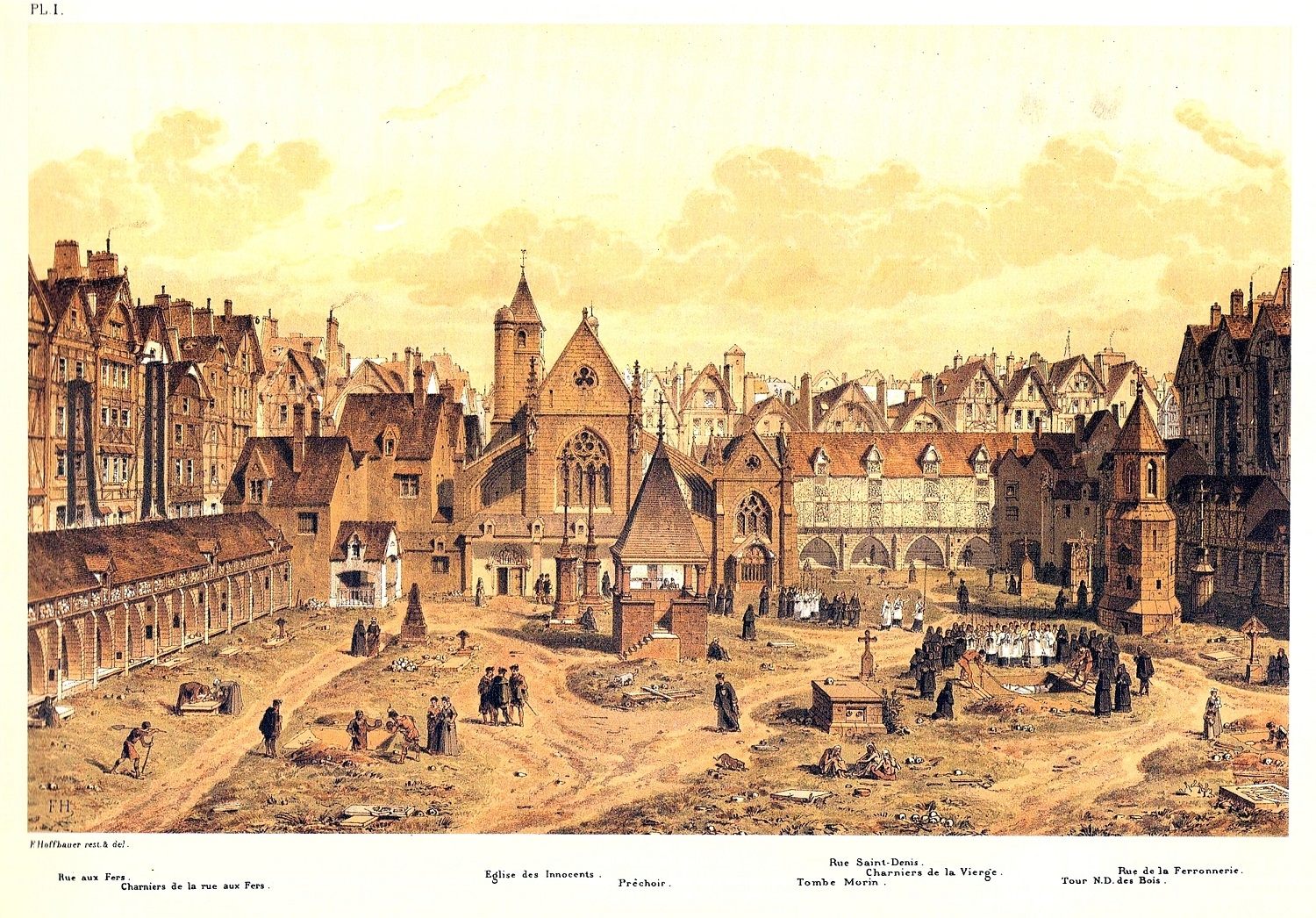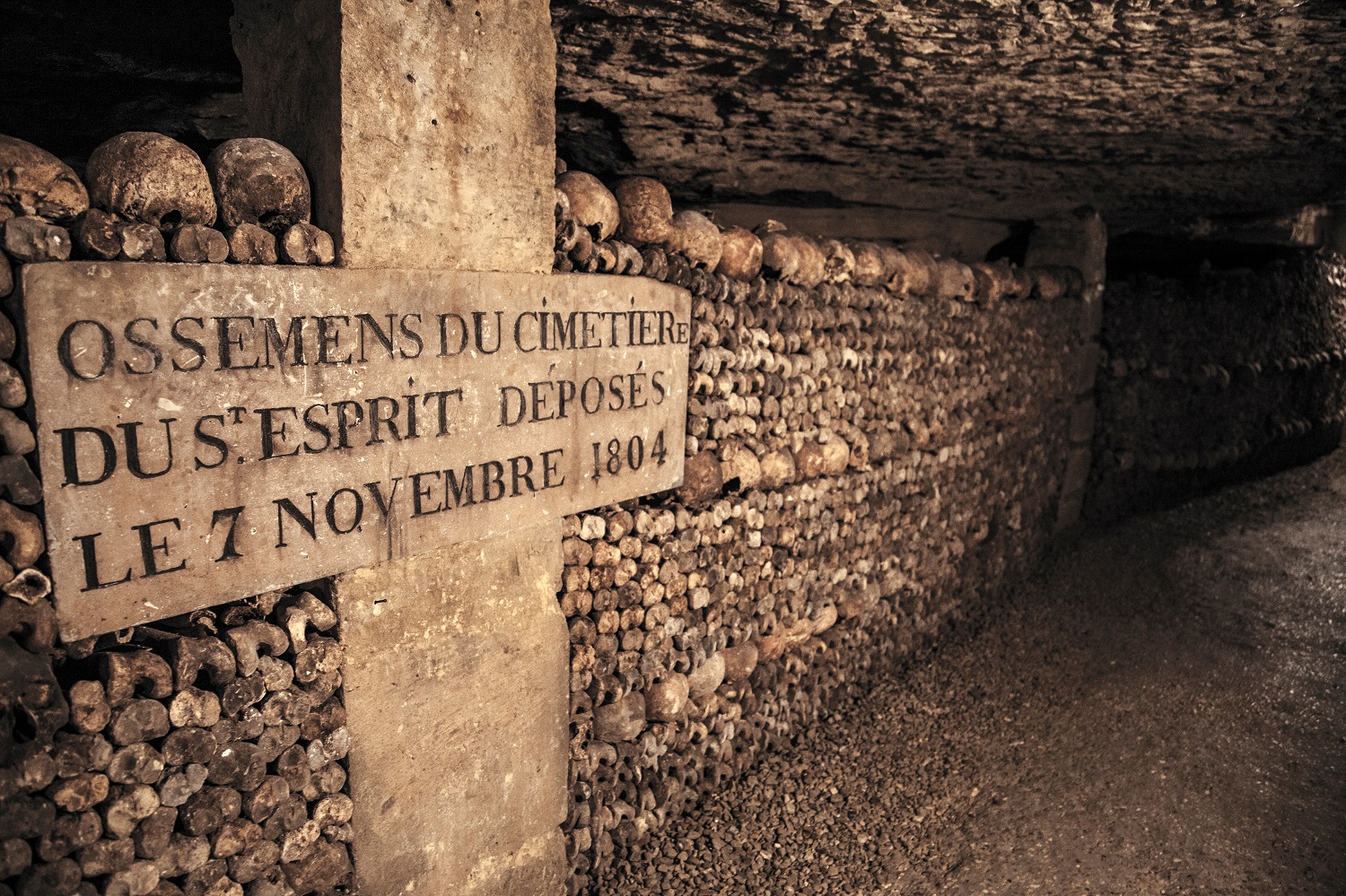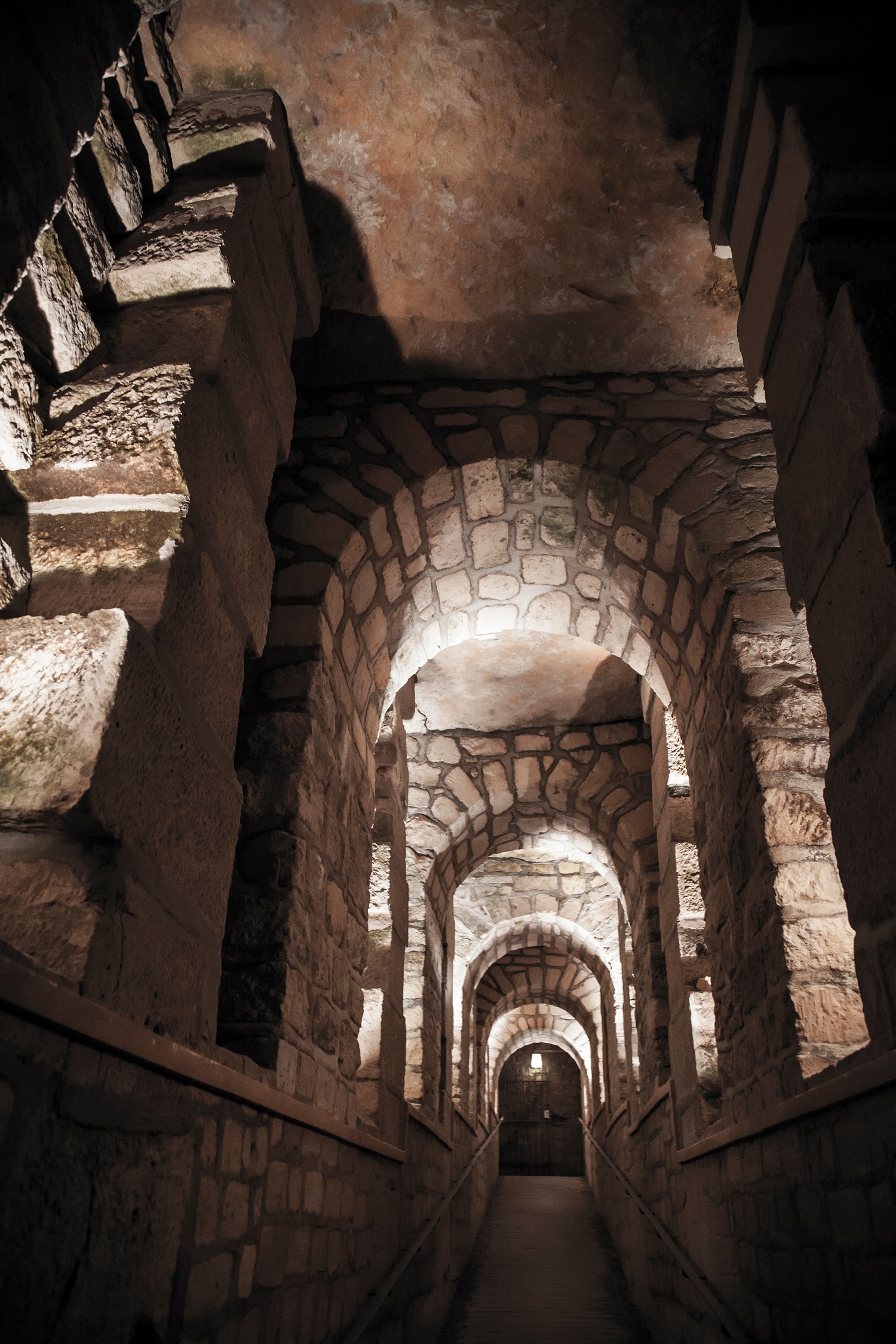Paris has a worldwide reputation for being the City of Love. Most of the people who visit there do so for that reason. They want to see history come to life with Notre Dame Cathedral, the Eiffel Tower, and countless other places that have been the source of inspiration for poets throughout the ages. However, what a lot of people don’t know is that underneath the City of Love lies a literal city of the dead. This is known as the Catacombs of Paris. It is speculated that these ossuaries span 170 miles underneath Paris. There are an estimated 6-7 million bodies that have been relocated from various graveyards in Paris. Why is there a cemetery underneath Paris? Let’s go back to the 18th century and take a look.

History Of The Catacombs of Paris
Back in the 18th century, the city of Paris was being overrun by dead bodies. Because of all the health problems at the time, people were dying left and right. As a result, the graveyards were overflowing with bodies. In particular, was the cemetery Les Innocents which had been in use since the Middle Ages. Since it was being used so much, it had become a mass burial site. The smallest amount of rain uncovered the shallow graves of the dead. The stench was said to be unbearable. Then, in 1780 there was an extended period of rain and one of the walls of Les Innocents collapsed. This caused the dead, decaying bodies to topple into people’s private property. As a result, Louis XVI shut down the graveyard permanently. In 1785 the existing bodies were carted out of the city to be put in tunnels beneath the city.

Les Innocents Cemetery during 1550.
Construction of the Catacombs
There are tunnels under the city of Paris dating back to Roman times. The Romans would dig for the limestone to build their impressive structures. After the Romans, the Parisians continued to use this method. Eventually, they began to dig farther beneath the city to make it easier to get the materials into Paris.
The tunnels underneath the city were unstable and were beginning to collapse. Because of this, they needed something to help keep the tunnels intact.
Putting the bodies in the tunnel served a twofold purpose. First and foremost, it got the bodies out of Paris, lessening the stench, the vermin, and the possibility for further disease. Secondly, it would aid in stabilizing the tunnels underneath the city that were beginning to collapse.

Catacombs of Paris Plan Map.
Moving The Dead
The French government undertook the endeavor to relocate the bodies in 1785. To do it they had the movers come into the cemeteries at night. This was to keep the moving on the down-low. They knew the Church, as well as the people of France, would have objected to this admittedly morbid plan. The movers would remove the bodies from the shallow graves. If there were any bodies with the fat left on the bones they would burn it off. They would then use the excess fat to make candles and soap. It took them twelve years to remove all of the bodies in the cemetery.
In the end, they moved 6-7 million bodies, some of which were 1200 years old. The jumbled bones of the dead would lie untouched in the Paris Catacombs for many years. It wasn’t until Louis-Étienne Héricart de Thury, director of the Paris Mine Inspection Service from 1810, had renovations completed that the Catacombs would be transformed into a mausoleum that people could visit. They began to compile the bones into heart shapes and various other designs. This made it pleasing to the eye and much more stable.


The Catacombs of Paris Today
At first, no one was permitted to actually go into the catacombs of Paris. However, after the creation of the mausoleum, there were about four trips into the catacombs per year. It was viewed as a special event for the elite. Today, the catacombs are open every day to everyone. If you would like to learn more you can visit their website, catacombes.paris.fr.

Passageway in The Catacombs of Paris
Please Comment and Share!
Have you visited the Catacombs of Paris? If so, what did you think? Is it too morbid, or just fascinating? We would love to hear your feedback. Please feel free to leave a comment below and share this post with your friends and family.






1 Comment
Leave your reply.